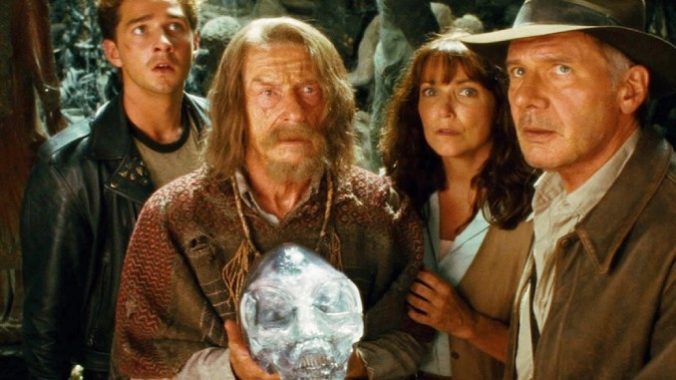What Unmade Indiana Jones Scripts Reveal about Dial of Destiny

The annoying thing about magic is that it’s hard to replicate. You’re likely to be thinking of this while watching Indiana Jones’ final adventure, Dial of Destiny, the first Indy movie made without Steven Spielberg and without any soul. Weirdly, its galaxy-brained third act swing feels exactly like something George Lucas (who has a story credit on every Spielberg Indy movie) would come up with, despite him being nowhere near this film’s production. Dial of Destiny feels like a film penned by four people (it was) and regardless of your take on the shark-jumping/fridge-nuking/time-hopping third act, there is something rewarding about a Disney blockbuster that doesn’t play it safe, even if it feels a lot like a 20-year-old script for a unproduced Indy sequel that’s sat in a producer’s drawer for decades. How do we know it feels like that? Because of all the 20-year-old scripts for unproduced Indy sequels that actually exist!
The difficulty with recapturing magic has never stopped George Lucas—the visionary storyteller responsible for hand-sculpting the personalities of the world’s most annoying people—from trying. Lucas helped originate a blockbuster hit that was another riff on the media he consumed as a child (George, please, if we could get a second idea from you), but The Last Crusade had scarcely been laid in its tomb before Lucas got the proverbial boulder rolling again with ideas for a fourth film.
Sequel pitches had already been floated during the original trilogy, with names such as Castle of Blood, The Lost World and The Monkey King. (One of these was set in a haunted house, one featured dinosaurs, and one was very racist. We’ll let you figure out which was which.) But all subsequent attempts to revive the franchise seem to center on a few things: It was set in the ‘50s, it was to ape atomic-age science-fiction, and there were to be aliens. For all those convinced the franchise lost its way in the final 15 minutes of Kingdom of the Crystal Skull, we were destined to end up here from the moment a sequel was discussed.
Multiple ‘90s screenwriters had a crack at the proto-Crystal Skull screenplay, including Die Hard author Jeb Stuart and Last Crusade writer Jeffrey Boam, but the furthest the project got was with Frank Darabont, Stephen King adaptor extraordinaire and the guy who got fired from The Walking Dead for trying to make the show good. After the backlash to Crystal Skull, somebody leaked Darabont’s latest draft (on Wikileaks?!) for what was then titled Indiana Jones and the City of the Gods, and it’s a pretty revealing blueprint for what would become Crystal Skull.
In City of the Gods, the Commies are hunting one of the Mayan’s crystal skulls, taking Indy from a ‘50s U.S. packed with federal agents to South America, where he’s reunited with Marion Ravenwood and an old colleague, Professor Oxley, who has been driven mad by the skull’s power. There they fight flesh-eating ants, fall down waterfalls, and discover an alien spacecraft in the climax. The opening sequence, with Indy on a Nevada military base, is nearly identical to what’s in the finished film—including a beat-for-beat replication of the nuclear detonation. That’s right, Darabont, writer-director of some of the best American films ever made, is likely responsible for nuking the fridge.
-

-

-

-

-

-

-

-

-

-

-

-

-

-

-

-

-

-

-

-

-

-

-

-

-

-

-

-

-

-

-

-

-

-

-

-

-

-

-

-








































